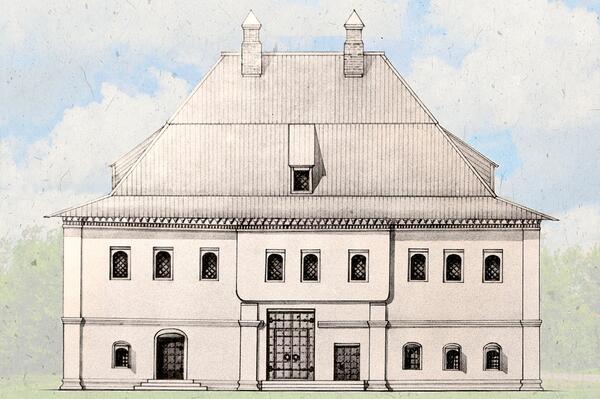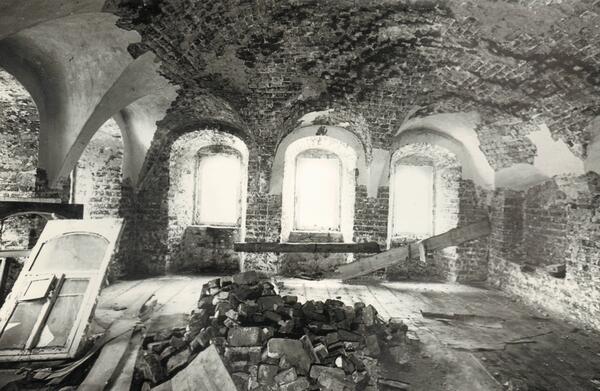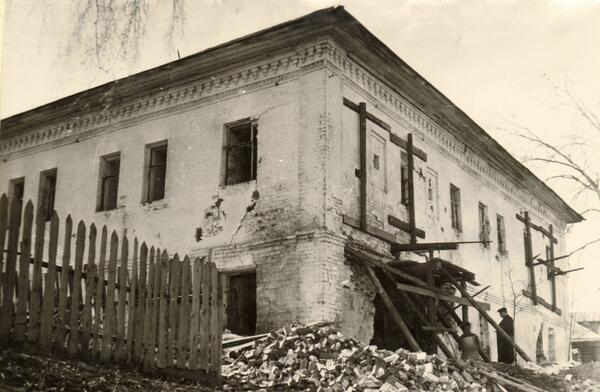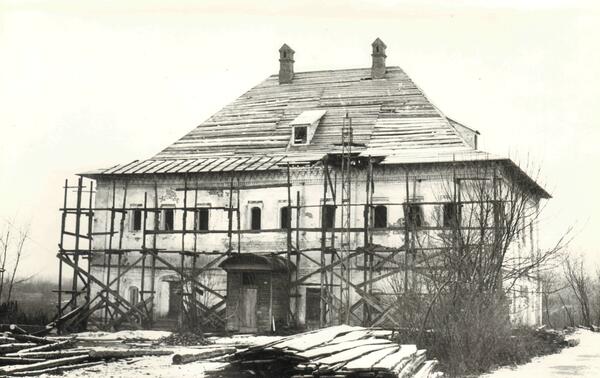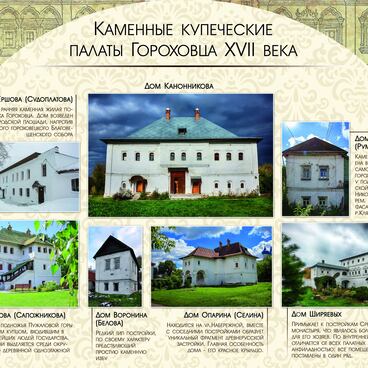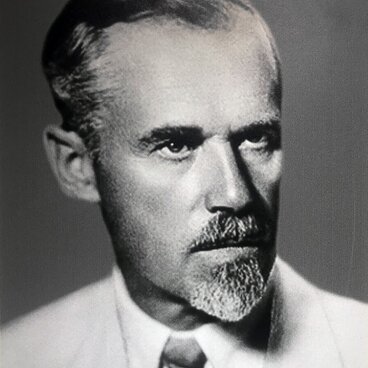The two-story house of the Kanonnikovs was built in Gorokhovets at the end of the 17th century. In the 1770s, it was owned by a merchant family and was named in their honor. The original owner of the stone building is unknown.
A built-in front staircase that led from the entrance hall of the first floor to the second floor was new to Gorokhovets architecture. It became the next step in the development of the traditional Russian porch that began to gradually migrate from the exterior design of a building into the interior one. The layout of the building does not differ from that of similar 17th-century stone dwellings. The house had a system of warm brick floors with a chimney installed inside: the fragments of the chimney have survived to this day.
Unlike other stone dwellings, this one did not have many owners. For at least two centuries, it stayed in one family. Yekaterina Kanonnikova, the first documented owner of the house, had sons Ivan and Yegor, who were listed as merchants of the 2nd guild and eminent citizens of the town of Gorokhovets.
The category of the urban population named “eminent citizens” was established by Catherine II in 1785. It included people engaged in liberal professions and the richest of the merchant class. The stone house on the riverbank was inherited by the two brothers and divided into two parts by a corridor and a bearing wall. According to the records of the 18th century, the house was listed under two numbers.
Both brothers were usurers and held high-ranking positions in the civil service. One of the brothers, Ivan Dmitriyevich Kanonnikov, even was “enrolled in Sciences at the Imperial Moscow University.” Between 1773 and 1782, he was a burgomaster in the Gorokhovets magistrate, and from 1788 to 1791 he was a councilor of the town duma.
Yegor Dmitriyevich Kanonnikov was married to a Frenchwoman Katerina Nefrantsova, who was twenty years younger than him. He held the position of burgomaster from 1770 and became a town mayor in 1773. He was the owner of a mill, listed as “a water-powered machine for grinding various grain seeds”, which was located on the bank of the Klyazma River.
In 1871, the two-story stone house belonged to Yegor Kanonnikov’s grandson — Vasily Alekseyevich Kanonnikov. It was later inherited by the latter’s son, the bourgeois Nikolay Kanonnikov, who became the last owner of the merchant house. In 1922, the state appropriated the two-story stone house from the Kanonnikovs, and it was soon divided into several communal apartments.
A built-in front staircase that led from the entrance hall of the first floor to the second floor was new to Gorokhovets architecture. It became the next step in the development of the traditional Russian porch that began to gradually migrate from the exterior design of a building into the interior one. The layout of the building does not differ from that of similar 17th-century stone dwellings. The house had a system of warm brick floors with a chimney installed inside: the fragments of the chimney have survived to this day.
Unlike other stone dwellings, this one did not have many owners. For at least two centuries, it stayed in one family. Yekaterina Kanonnikova, the first documented owner of the house, had sons Ivan and Yegor, who were listed as merchants of the 2nd guild and eminent citizens of the town of Gorokhovets.
The category of the urban population named “eminent citizens” was established by Catherine II in 1785. It included people engaged in liberal professions and the richest of the merchant class. The stone house on the riverbank was inherited by the two brothers and divided into two parts by a corridor and a bearing wall. According to the records of the 18th century, the house was listed under two numbers.
Both brothers were usurers and held high-ranking positions in the civil service. One of the brothers, Ivan Dmitriyevich Kanonnikov, even was “enrolled in Sciences at the Imperial Moscow University.” Between 1773 and 1782, he was a burgomaster in the Gorokhovets magistrate, and from 1788 to 1791 he was a councilor of the town duma.
Yegor Dmitriyevich Kanonnikov was married to a Frenchwoman Katerina Nefrantsova, who was twenty years younger than him. He held the position of burgomaster from 1770 and became a town mayor in 1773. He was the owner of a mill, listed as “a water-powered machine for grinding various grain seeds”, which was located on the bank of the Klyazma River.
In 1871, the two-story stone house belonged to Yegor Kanonnikov’s grandson — Vasily Alekseyevich Kanonnikov. It was later inherited by the latter’s son, the bourgeois Nikolay Kanonnikov, who became the last owner of the merchant house. In 1922, the state appropriated the two-story stone house from the Kanonnikovs, and it was soon divided into several communal apartments.

